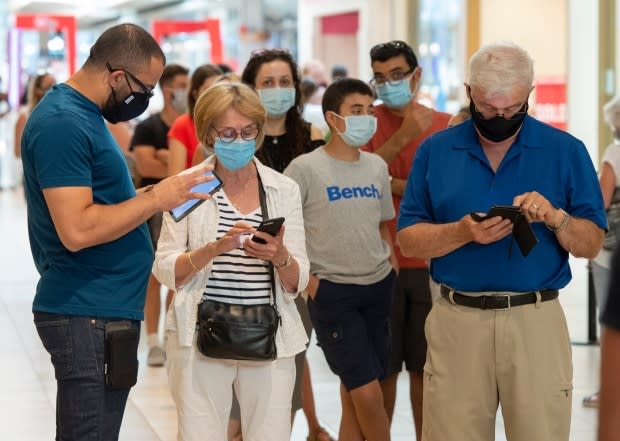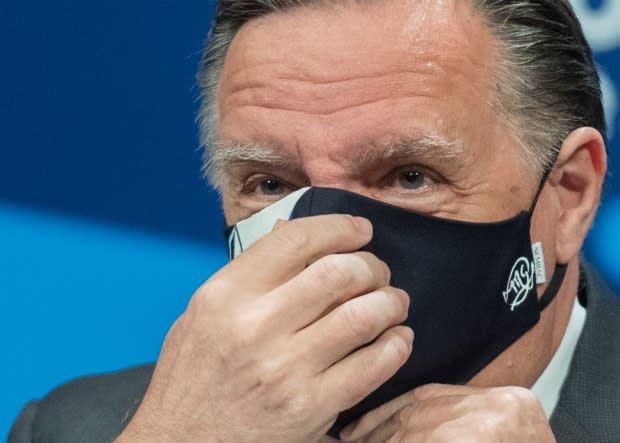What's behind the latest rise in coronavirus cases in Quebec?
By late June, it appeared Quebec was finally past the worst of the COVID-19 outbreak that had brought the health care system to the brink and left thousands dead in long-term care homes.
Now, less than a month later, the province is again seeing its case count rise, prompting a debate among experts, pundits and politicians about what has caused the sudden reversal of fortune.
On the eve of summer, the province was registering, on average, fewer than 90 new cases of coronavirus per day, a figure that just weeks earlier regularly surpassed 800.
With other public health indicators — hospitalizations, deaths — all pointing downward, Premier François Legault allowed Quebecers to gather again in small groups, and restaurants and bars were allowed to reopen.
Around this time, Benoît Mâsse, a professor of public health at the Université de Montréal, struck a discordant note.
In a June 10 interview with CBC's French-language service Radio-Canada, Mâsse predicted that by mid-July cases would be on the rise again.
"Sadly, I'm right on," he said Tuesday, when Quebec posted 180 new cases, its highest daily increase since June 11.
Since the start of the month, the five-day rolling average of new cases has climbed from 70 to 159.
"Although it was predictable, it is concerning," Mâsse said in an email exchange.
"The origin is simple: the deconfinement. Once you allow more contact, you provide oxygen to the fire."
People — 'the big unknown'
Many in the province have been quick to blame the uptick on the reopening of bars on June 25.
But while public health officials in Montreal have traced dozens of cases to a few bars in particular, there is not yet enough publicly available evidence to pin the blame solely on them.
Information compiled by Quebec's Health Ministry suggests that between June 28 and July 4 fewer than five per cent of new cases in the province could be traced to a bar.

On the other hand, around 35 per cent were due to family contacts; 15 per cent were health care workers; 10 per cent were residents of long-term care home or inmates; another 10 per cent were traced to workplaces and various other sources. The source of the remaining 25 per cent was undetermined.
Rather than heed demands to close the bars again, Legault has opted instead to urge Quebecers to respect the 10-person limit on private gatherings.
But even within the public health guidelines on private gatherings, there is a lot of room for interpretation.
Mâsse pointed out that the rules would allow someone to have repeated 10-person parties throughout the week, though the goal is reducing everyone's exposure to risky contacts as much as possible.
"People's behaviour is the big unknown," he said. "Will they respond to this [slight] increase by reducing their contacts? Or will they wait until the government imposes new restrictions?"
Other experts worry the decision to reopen bars sent the wrong message to the public by signalling that gatherings in enclosed spaces with alcohol was a risk-free activity.
"The same kind of behaviour is repeating itself in private parties," said Nima Machouf, an epidemiologist affiliated with the Université de Montréal.
Time to panic?
While the increase has been cause for concern for Quebec's elected officials, they are not panicking.
Legault has noted the rise in cases hasn't been accompanied by an increase in hospitalizations, nor are elderly and long-term care homes — whose residents are particularly vulnerable to the disease — being hard hit.
For epidemiologists, though, it's worrisome that the province is seeing a rise in the summer.
Quebec's annual two-week construction holiday began on the weekend. And as Quebecers travel around the province for vacation, Machouf said, there is a risk they spread the disease unknowingly, especially given roughly half of those infected don't present symptoms.
"We really have to be careful," she said. "It is increasing too much … to feel like we're in control of the epidemic."
Summer was also supposed to be when controlling the disease was easiest, with schools closed and weather that is favourable for outdoor activities.

"My worry is that if we cannot control the spread of the virus in an ideal condition like the summer … it will be a lot harder to control in the fall, and a [substantial] second wave is likely," said Mâsse.
Quebec isn't alone in seeing a downward trend reverse. British Columbia, Alberta and Ontario have also seen increases in recent days.
Some of that was to be expected. Keeping case counts low was always going to be difficult once provinces began lifting lockdown measures.
But as long as public officials can trace the source of the outbreaks, these mini spikes are manageable, said Erin Strumpf, a professor in McGill University's Department of Epidemiology, Biostatistics and Occupational Health.
"If we can understand the interactions that are leading to the increases in cases, then we can change our behaviour, we can change the rules," Strumpf said.
Quebec, for instance, introduced a provincewide rule on Saturday requiring masks be worn in indoor public spaces, including for clients in bars and restaurants who are not seated.
"The thing we need to worry about — the reason to 'freak out' — is if there are unexplained, uncontrolled outbreaks going on, because there's no way to control that," said Strumpf.


